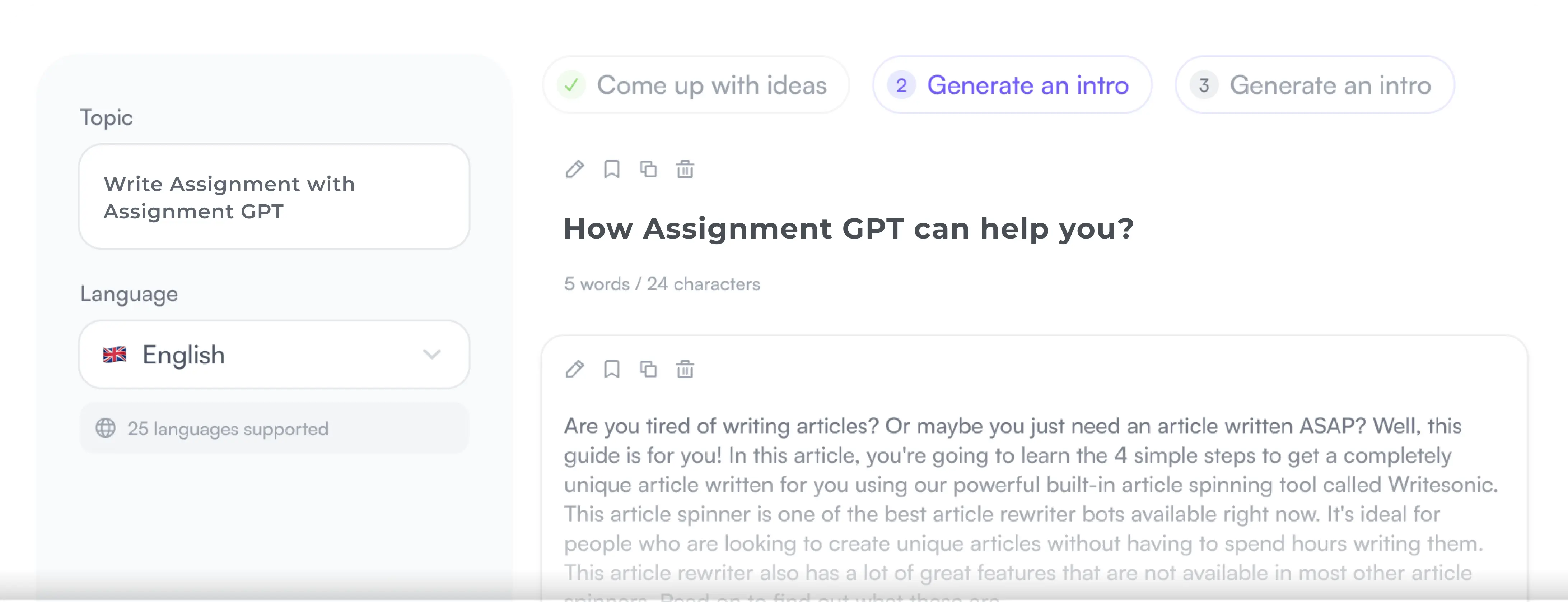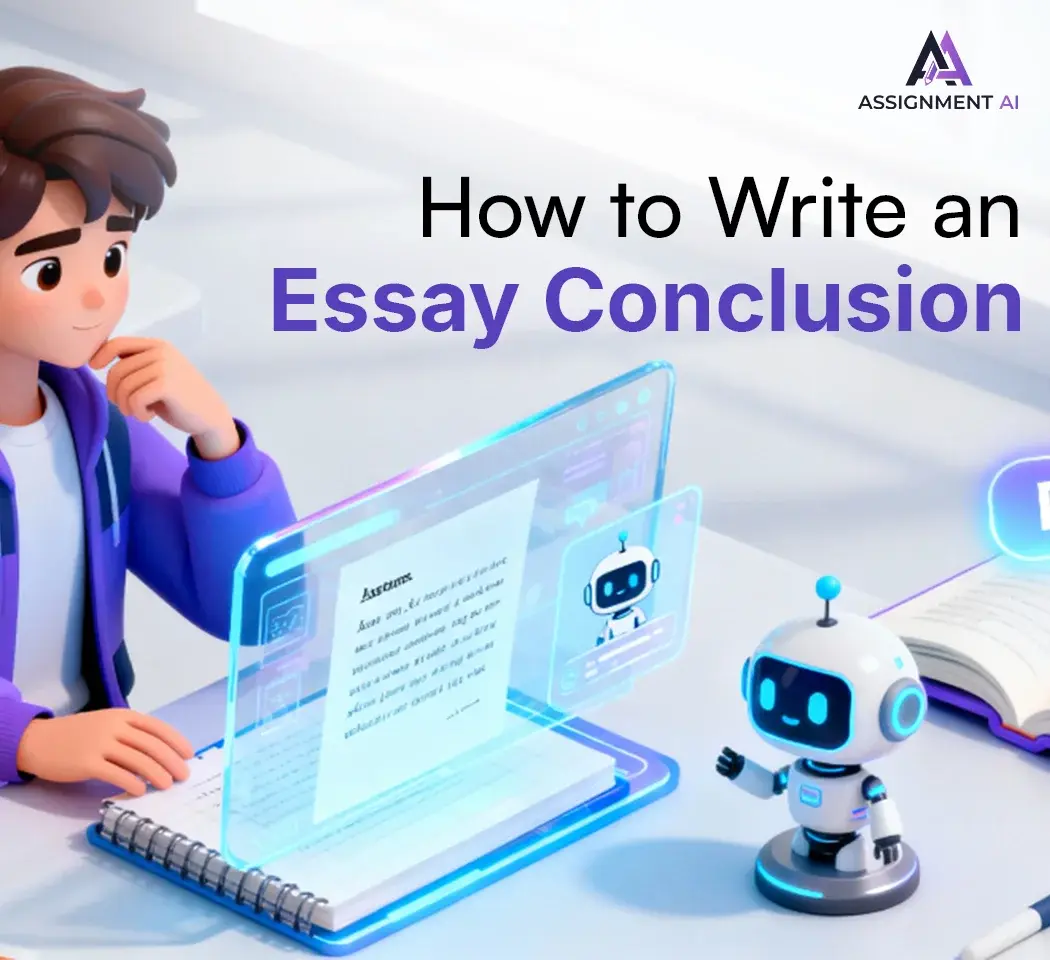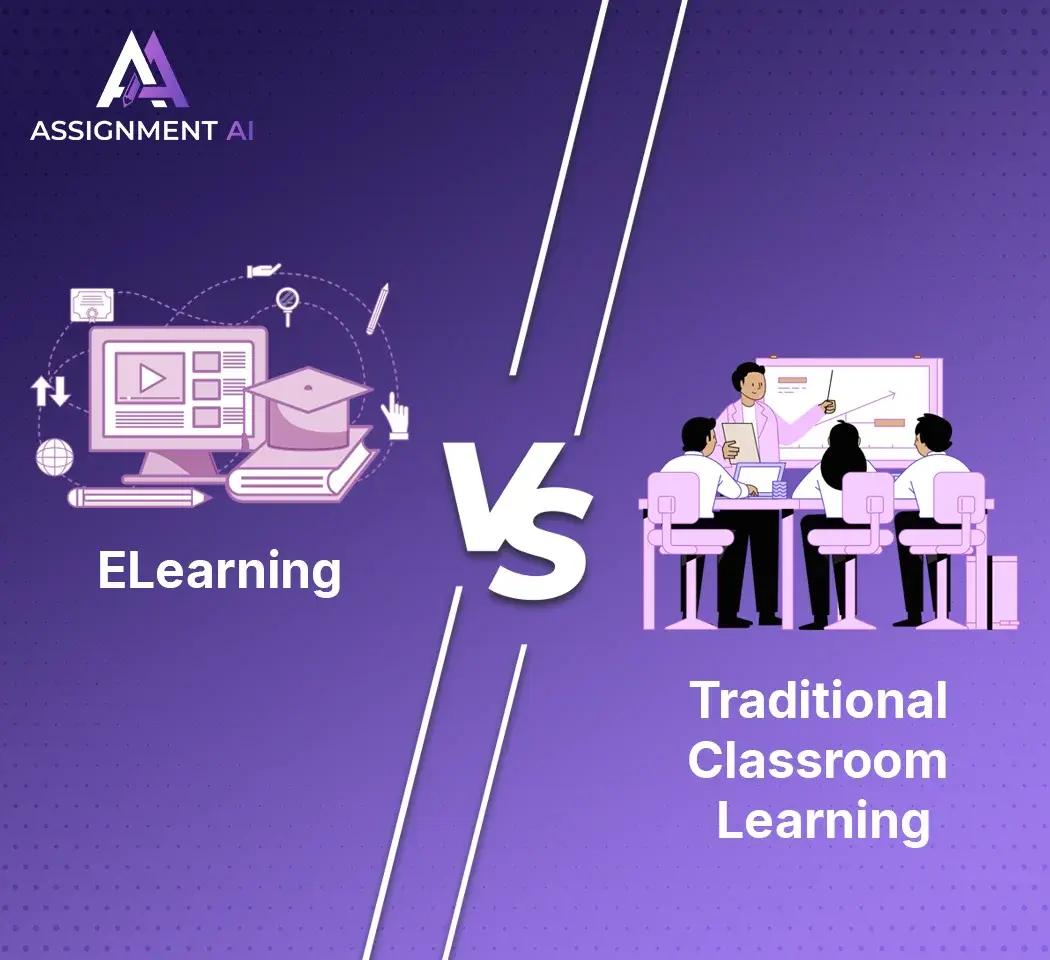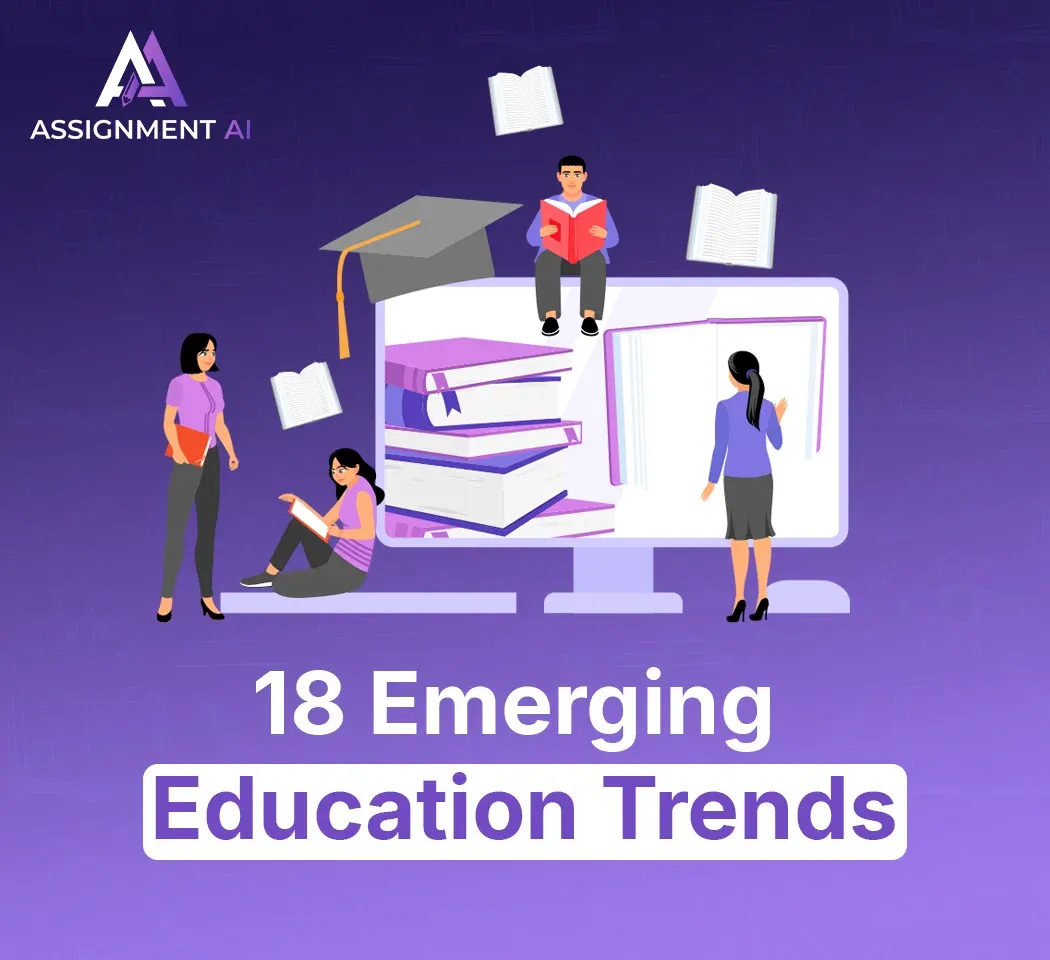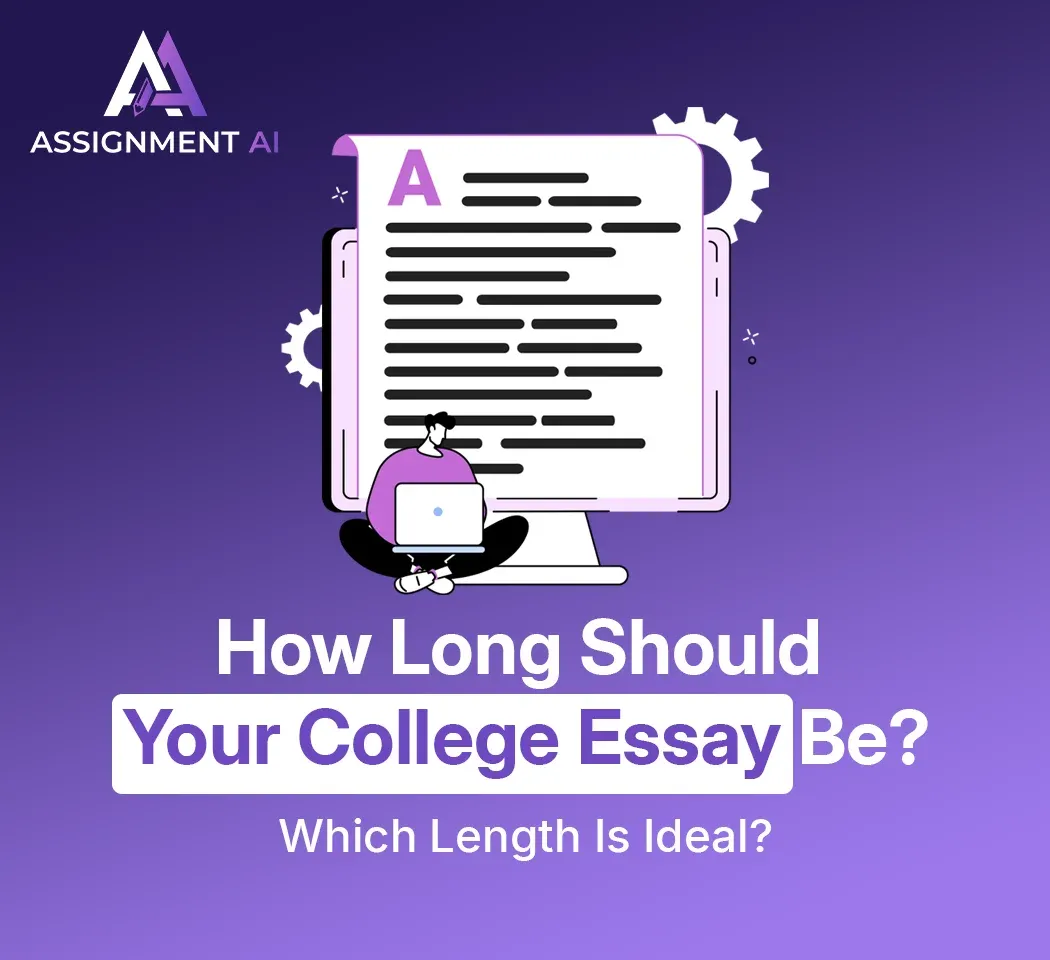AssignmentGPT Blogs
The United States continues to be the prime destination for Indian students who want to pursue quality higher education abroad. With over 200,000 Indian students pursuing their education in the United States and a consistent need for quality education and research opportunities, the need for financial support and scholarships continues to grow, especially with increasingly expensive US-based education costs. Scholarships are crucial for making this dream a possibility for qualified Indian students.
This comprehensive guide will analyze potential scholarship options available to Indian students in 2025, explain eligibility criteria and the process to apply, and provide details on strategies to get funding for educational opportunities abroad in the United States.
Why Study in the USA?
The United States has unbelievably, unique benefits for international students, which is a large part of the reason why so many students choose to invest large amounts of money into their education:
1. Academic Excellence
There are the top universities in the world such as Harvard, MIT, Stanford and hundreds of other respected universities that consistently rank near the top in both educational and research stature.
2. Research Opportunities
The US is the leading country for research and development in almost every area (STEM, humanities, etc.) and international students get to use the best facilities, research with some of the best faculty, and sometimes even work on groundbreaking projects.
3. Cultural Diversity
American universities are some of the most multi-cultural institutions in the world and have students from every country. The diversity of cultures assists international students in many international careers and cultural perspectives.
4. Career Prospects
The US labor market is the highest for trained professionals and there are way too many opportunities for a student. Most international students taking advantageare able to find their first job through Optional Practical Training (OPT) programs and eventually transition to permanent residency.
5. Innovation Hub
As an area with many of the world’s most innovative entrepreneurship and technological advancement areas, students are exposed to the industry leaders, startup ecosystems, and innovation networks that shape their future.
Types of Scholarships Available
Understanding the various scholarship categories helps students identify the most suitable opportunities based on their profile and circumstances:

1. Merit Scholarships
Merit scholarships are awarded for academic excellence, accomplishments, activities, and potential. Merit scholarships usually require high GPAs, standardized test scores, excellent leadership capabilities, and service to society. Merit-based scholarships are very competitive processes, but they can provide robust financial support for qualified candidates.
2. Need-based Scholarships
Need-based scholarships are based on student financial need. The family income, family assets, and financial situation can all inform need-based scholarships. Many universities and colleges provide need-based aid for international students, but the availability of need-based aid varies dramatically from university to university.
3. Subject (Topic)-Specific Scholarships
Subject-specific scholarships are specifically designed for international students within subject areas, such as STEM (Science, Technology, Engineering, and Mathematics), business, arts, and social science. Subject-specific scholarships might be funded by professional organizations, industry groups, or other foundations.
4. College/University-Specific Scholarships
Many colleges/universities offer scholarships for international students. Each scholarship offered by an institution may be a different program, with different criteria, and different award types (i.e., partial tuition to full-ride scholarships).
5. Government Scholarships
The governments of the US and India provide scholarship programs designed to promote educational exchange and international relationships, among other things. Scholarship programs funded by the United States government and Indian government are competitive and prestigious programs and tend to include comprehensive funding and additional benefits.
6. Scholarships from Private Organizations
Many foundations, corporations, and non-profit organizations financially support international education through scholarships. The criteria for these scholarships may include being international students or other stipulations based on the organization's mission or focus.
Also read this article : Top Universities in the USA
Eligibility Criteria for US Scholarships
While specific requirements vary among scholarships, most programs for Indian students evaluate candidates based on the following criteria:
1. Academic Performance
The GPA requirement may be anywhere from 3.0-3.8 on a 4.0 scale, and more competitive scholarships could have different, higher GPA standards.
2. Standardized Test Scores
Standardized tests like the SAT and/or ACT for undergraduate scholarships, and the GRE or GMAT for graduate scholarships, as well as English proficiency tests such as TOEFL or IELTS.
3. Financial Need
For need-based scholarships, the applicants must provide an assessment of their family's income/assets to demonstrate true financial need.
4. Leadership and Extracurricular Activities
Participation in some community service, leadership role, sports, pr arts, or other activities that help demonstrate well-roundedness and commitment to making a positive contribution and impact.
5. Personal Statement and Essays
Personal statements that serve to vividly portray a student's academic goals, career goals, and how the scholarship will assist in either academic or career goals.
6. Letters of Recommendation
Highly regarded letters written or signed by teachers, professors, employer or community leaders that can vouch for the candidate's aptitude and personal qualities.
7. Field of Study
Scholarships that may be limited to specific fields of study or research area, especially those in a high-demand area (STEM).
Top Scholarship Programs for Indian Students
| Scholarship Name | Type | Coverage | Eligibility | Application Deadline |
|---|---|---|---|---|
| Fulbright-Nehru Scholarships | Government-funded | Full funding including tuition, living expenses, airfare, health insurance | Indian citizens with bachelor's degree, strong academic record | May 1st (annually) |
| Inlaks Shivdasani Foundation Scholarship | Private Foundation | Up to $100,000 per year | Indian citizens under 30, admitted to top US universities | January 15th |
| Tata Scholarship at Cornell University | University-specific | Full tuition and expenses | Indian undergraduate students, need-based | January 2nd |
| AAUW International Fellowships | Organization-based | $18,000-$30,000 | Women pursuing graduate/postgraduate studies | November 15th |
| Joint Japan World Bank Graduate Scholarship | Government-funded | Full funding | Citizens from developing countries including India | April 11th |
| Rotary Peace Fellowship | Organization-based | Full funding for peace studies | Professionals with experience in peace and conflict resolution | May 15th |
| University-specific Merit Scholarships | University-based | Varies ($5,000-$50,000) | High academic achievers | Varies by university |
| USIEF Fulbright-Nehru Fellowships | Binational Commission | Full funding | Doctoral and postdoctoral researchers | July 15th |
| Narotam Sekhsaria Foundation Scholarships | Private Foundation | Up to $50,000 per year | Indian students in top global universities | December 31st |
| SI-UK University Partnership Scholarships | Education Consultant | Varies | Students applying through SI-UK | Throughout the year |
How to Find and Apply for Scholarships
Successfully securing scholarships requires a strategic and systematic approach to research and application:
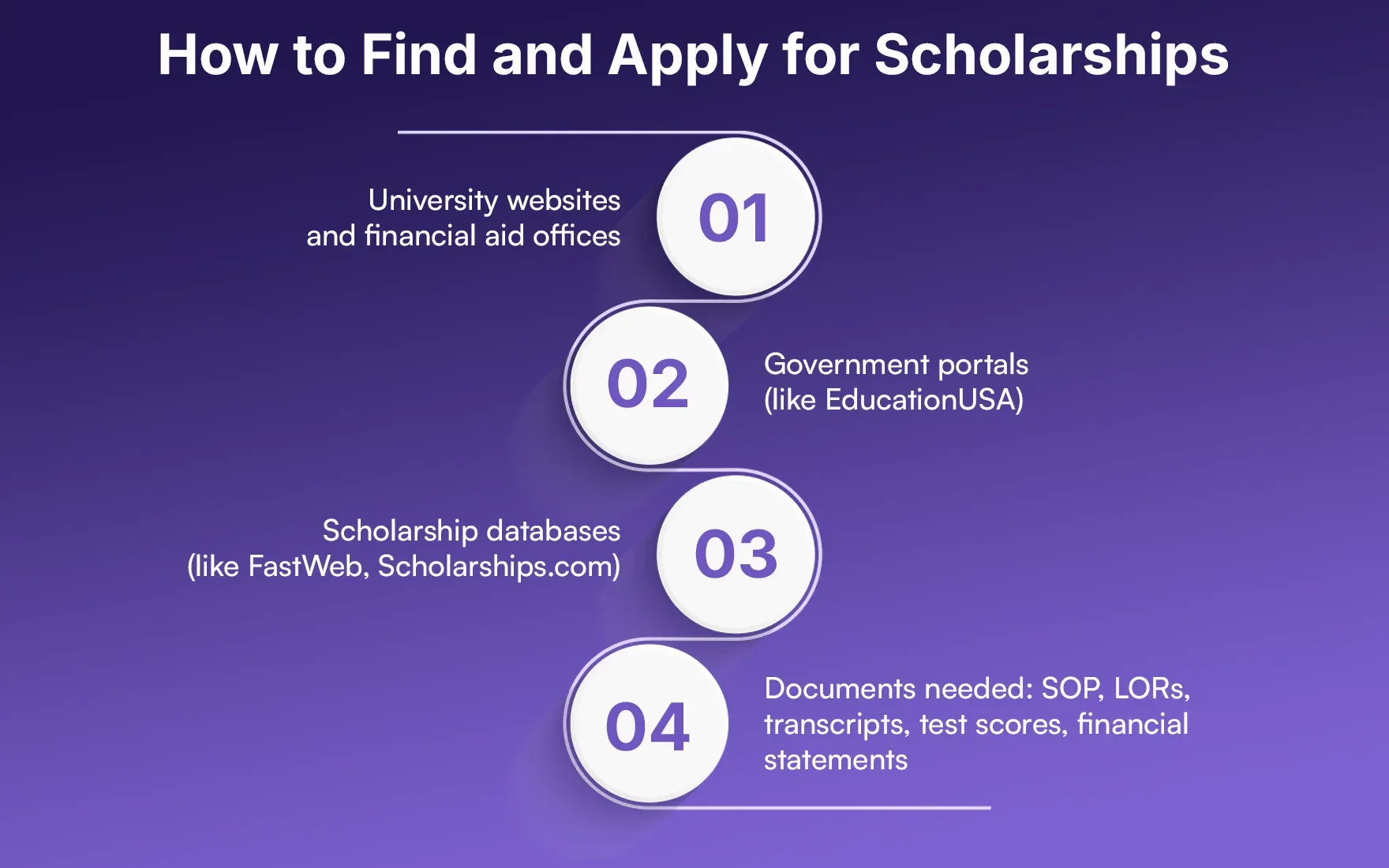
Research Sources
1. University Websites and Financial Aid Offices
Look first at the financial aid section of you institution of choice. Almost all institutions have extensive databases for available scholarships with details on how to apply, and important deadlines.
2. Government Portals
Use trusted resources like EducationUSA, which is a U.S. government-funded initiative that provides complete information for students about studying in the U.S., including useful scholarship information for international students.
3. Scholarship Databases
Use scholarship consortiums online, like FastWeb, Scholarships.com, College Board Scholarship Search, and Peterson's, to find opportunities that are right for your profile and interests.
4. Professional Organizations
If you are looking for assistance in your area of study, you can find some scholarships from professional orgs in your field of study. For example, IEEE for engineers or American Chemical Society for Chemistry students.
5. Cultural and Community Organizations
There are a number of Indian-American organizations and cultural associations that may provide scholarships for Indian students getting an education in the U.S.
Essential Documents
1. Statement of Purpose (SOP)
An interesting story that conveys the details of your academic goals, professional goals, research interests, and how your professional program links to your goals and objectives. The content of SOPs must be original for each scholarship award you apply for.
2. Letters of Recommendation (LORs)
These would typically be 2-3 letters from professors, employers, or mentors who can speak to your academic skills, character, or potential for success.
3. Official Academic Transcripts
You would need the official transcripts from all post-secondary (previous) institutions and most often have them authenticated or evaluated through a recognized agency.
4. Standardized Test Scores
This would include the official score reports from the standardized exams that may be required, including GRE, GMAT, TOEFL, or IELTS.
5. Financial Statements
Possibly documentation of family income, assets, and financial circumstances if it is a need-based scholarship.
6. Research Proposals
Documentation outlining your research project, methodology, and the outcome (for research based scholarship applications).
7. Portfolio or Work Samples
Depending on your area of study, you may be required to submit some examples of your creative work, research papers or publications, or a professional portfolio.
Read More : Top Courses for Indian and International Students in the USA
Scholarship Funding Amounts
Understanding the financial landscape of scholarships helps set realistic expectations and plan your funding strategy:
Fully Funded Scholarships
Heads in to details, these comprehensive scholarhips will cover almost all major costs of attending in the US viz tuition fees, cost of living, health insurance and also transportation whereas sometimes books and research are also included. In FY 2025 , Fulbright scholarship was awarded to more than 350 Indian students and working professionals which is fully funded one among the most prestigious scholarships. The total award can reach from $40,000 up to $80,000+, basing on the university as well as the program.
Partial Scholarships
These fellowships are awarded to offset the total costs of a degree, conveninetly in the form of tuition waivers or stipends. Scholarships can award anything from 25% to 75% of the total costs thereby you should be capable of managing your personal funding (e.g., own funds, family, education loans etc) along with the scholarship!
Funding Range Overview
1. Small Scholarships: $2,000 - $10,000 annually, often covering books, supplies, or partial living expenses
2. Medium Scholarships: $10,000 - $30,000 annually, typically covering significant portions of tuition or living costs
3. Large Scholarships: $30,000 - $50,000 annually, covering majority of educational expenses
4. Full Scholarships: $50,000 - $80,000+ annually, covering all major expenses for the entire duration of study
Tips to Improve Your Scholarship Chances
Maximizing your scholarship success requires strategic planning and meticulous execution:
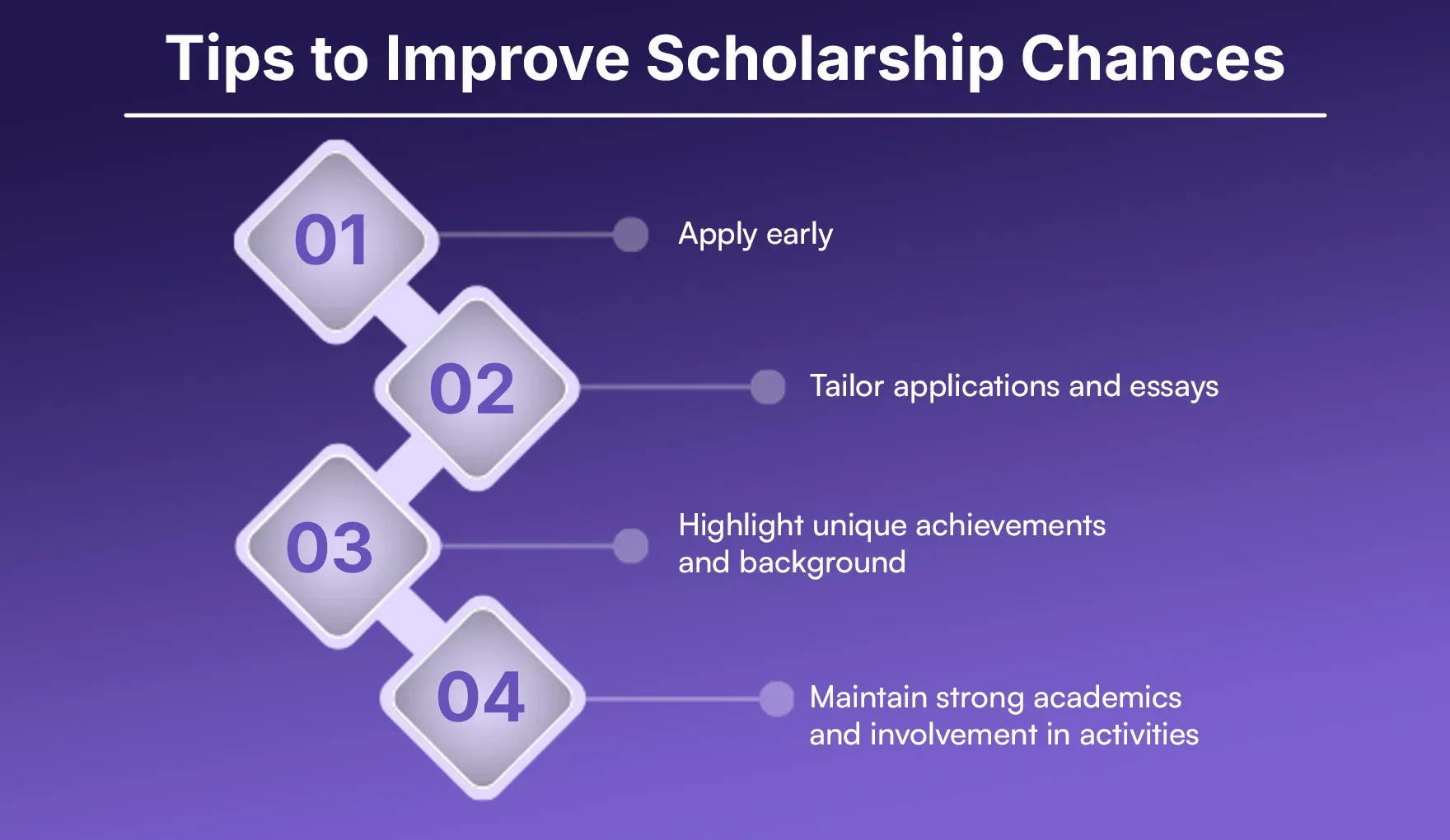
Start Early and Stay Organized
You generally have to start seeking for scholarships 12-18 months before the time you expect to commence your studies. You ought to prepare a table of the scholarship providing body name, deadlines, requirements and status of application. Starting early helps you avoid the headache of applying on last date because you are going through many applications again and again. Rushing at the last minute only makes students panic and generate feelings of anxiety only.
Customize Applications and Essays
You ought to specifically tailor your applications and essays to satisfy the scholarship’s mission, values as well as its selection criteria. It is clear to anyone that generic applications do not work, you will hardly have any chances of winning an award if you use one application/essay for all scholarships. You will be outstanding should you research on the sponsoring entities, previous laureates and their organizational goals prior to structuring a targeted response.
Elevate Uncommon Accomplishments and Experiences
If you have done or felt anything in your life that makes you a better candidate than the others it will be great to include these facts into your application. Such activities could be research work, community engagement practices, cultural background, past overcoming experiences, or anything that may suggest a different approach to the resolution of issues.
Continue to Achieve Academically
Academically growing further will forever be the support to guarantee you scholarships and funding. Most students work as furiously as possible to do well in class. A couple of things you can do are keeping your GPA high, taking challenging courses to keep learning, and fueling your curiosity through independent study or research.
Continue to Pursue Leadership and Extra-Curricular Involvement
You should also be able to participate in clubs, sports, and organizations that can help you to lead and/ or learn more about yourself. Realise that engaging is the basic ground where you can portray leadership skills as well as competencies. Far from just being quantitative or qualitative measure of quantity, your engagement matters a lot. Participate actively in things where you can genuinely exert influence over others and yourself and have opportunities to take on leadership roles.
Seek Mentorship or Feedback
Address your professors, career advisors or students who have previously received scholarships for advice on how to fill out the applications. There are many clients who have successfully benefited from mentors when it comes to the creation of application materials as well as submission of the same.
Apply for Many Scholarships
Do not put all your eggs in one basket; also pursue a broad range of awards. Do not focus entirely on the most competitives and prestigouse scholarshops, you should also take into account the micro and small scholarships since cumulatively they may be quite substantial.
Be Prepared for Interviews
Many scholarships include interviews as part of the application process. Prepare yourself to clearly and confidently articulate your goals, experiences and motivations for your field. Practice selected examples that will support your application to show your commitment to your field of study.
Application Timeline and Deadlines
Most scholarship applications follow annual cycles with specific deadlines. Here's a general timeline to help you plan:
18 Months Before: Begin researching scholarships and suitable universities
12-15 Months Before: Begin preparing application materials and standardized test booklets
9-12 Months Before: Complete standardized tests and request transcripts
6-9 Months Before: Begin writing essays and personal statements; request letters of recommendation
3-6 Months Before: Submit applications and preparing for interviews
1-3 Months Before: Receive decisions and accept awards
Key deadlines for major scholarships typically fall between October and May, with many clustered in January-March period.
Common Mistakes to Avoid
Learning from others' experiences can help you avoid pitfalls that diminish your scholarship chances:
1. Missing Deadlines:
Even the most qualified individual may disregard an application if it was submitted past its deadline. Consequently, my second suggestion is to keep detailed records of deadlines and apply well ahead of time.
2. Generic Applications
Off-the-shelf applications, that are not really unique or tailored specifically for the type of scholarship your are applying to, might end up not doing their job. Do you know what it takes to modify each application?
3. Scarce Research in Depth Hence / Therefore
Applying for scholarships with incomplete knowledge on the eligibility criteria or the organization’s mission wastes time and hence reduces chances.
4. Substandard Essay Submission
Essays that are hastily written, and with poor proof reading, depict badly on the candidate so far. As a result of this, much attention should be given to writing a story that the candidate will be asked to write by him/herself.
5. Inadequate Paperwork submission
Applications which fail to include any required supporting documents often end up being disqualified.
6. Too Much over-confidence
If students anchor their education to a single scholarship possibility so to say, without any safety nets then it creates another problem. Even if the opportunity is lost later in life, so does the student.
Alternative Funding Options
While scholarships represent the most desirable funding source, consider these additional options:
1. Research Assistantships: Many graduate schools offer paid research positions which come with stipends and tuition waivers.
2. Teaching Assistantships : As a general rule, the teaching assistantships are provided to graduate students who receive funding and gain experience in this way.
3. Work-Study Programs: Through on-campus employment students are able to continue their status in the US, and get some support with living expenses.
4. Educational Loans: Both Indian and US banks offer student loans targeted to the foreign students specifically.
5. Employer Sponsorship: There are corporations that sponsors outstanding employees to study at advanced level and the employees are bonded to work for the corporation after they have graduated.
Resources for Continued Learning
To stay updated on scholarship opportunities and application strategies:
1. EducationUSA: Official US government source for comprehensive study abroad information
2. Institute of International Education (IIE): Publisher of annual reports on international student trends and funding
3. University Financial Aid Offices: Direct contact with institutional scholarship coordinators
4. Professional Association Websites: Field-specific organizations often maintain scholarship directories
5. Indian Embassy and Consulate Resources: Updates on bilateral educational exchange programs
Conclusion
Securing scholarships to study in the U.S. requires a strategic and dedicated approach. By starting early, researching thoroughly, and tailoring applications to each opportunity, Indian students can significantly reduce their financial burden and make their dream of studying in the U.S. a reality. Let AssignmentGPT.ai be your academic companion in overcoming challenges and focusing on your long-term goals.
Although the process can be competitive and time-consuming, the rewards—both financial and personal—are significant. Applying for multiple scholarships increases the chances of receiving funding, making higher education in the U.S. more affordable. While the journey may be challenging, the long-term benefits for education and career development are well worth the effort.
FAQs
1. At what point should I start applying for scholarships?
2. How high is the competition rate for scholarships as far as Indian students are concerned?
3. Are there scholarships specifically targeted at women or minority students?
Marketing Executive at @AssignmentGPT
I lead strategic campaigns, blending creativity with analytics to drive brand growth and engagement across digital platforms.
Master AI with
AssignmentGPT!
Get exclusive access to insider AI stories, tips and tricks. Sign up to the newsletter and be in the know!

Transform Your Studies with the Power of AssignmentGPT
Empower your academic pursuits with tools to enhance your learning speed and optimize your productivity, enabling you to excel in your studies with greater ease.
Start Your Free Trial ➤Start your success story with Assignment GPT! 🌟 Let's soar! 🚀
Step into the future of writing with our AI-powered platform. Start your free trial today and revolutionize your productivity, saving over 20 hours weekly.
Try For FREE ➤